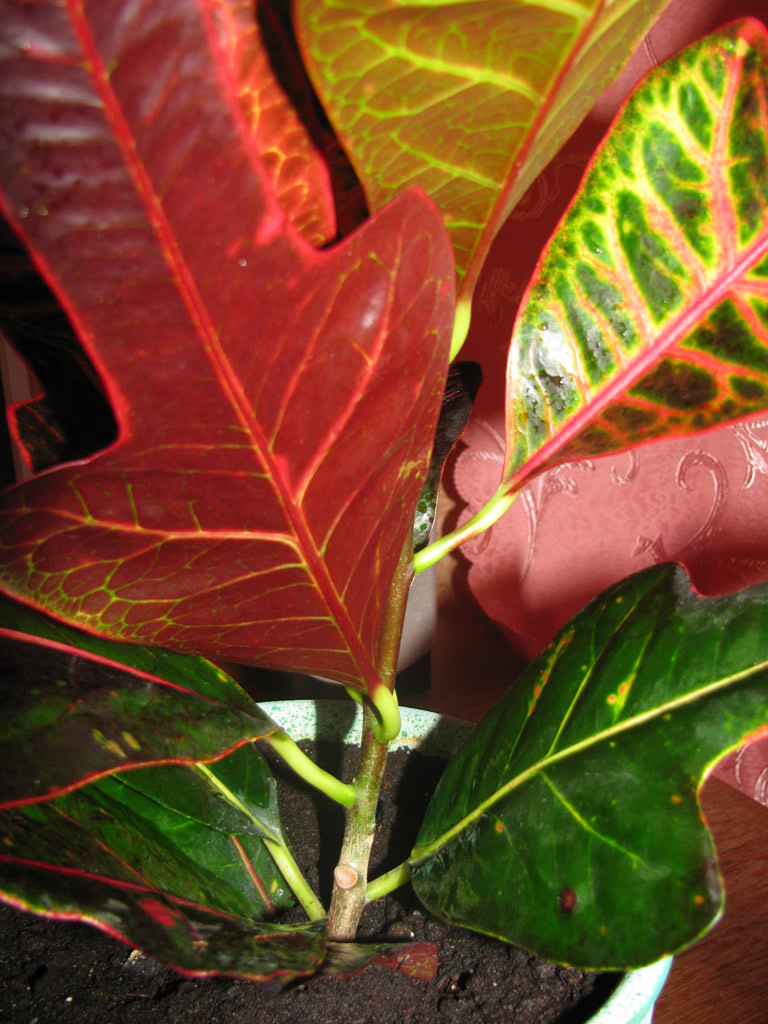When you know what to plant next to this or...
This Amazing Croton Mammy Codiaeum
Perhaps, you have heard of mammy croton. This wonderful house plant can make your room brighter. In the native environment it can grow as a small tree or a large shrub. Its usual height is between 3 and 8 feet.
✔ We Released The Croton HandBook
CLICK HERE TO LEARN MORE >>
The plant grows rather slowly: it normally gains not more that 12 inches per growing season. However, if you take care of your croton, it may grow up to 12 inches. These are not so frequent cases, though.
This genus has multicolored leaves which range from orange or red to green, black and even yellow. Personally I have several pots with croton at home: yellow, orange, red and two-colored.
The main advantage of a croton plant is that it doesn’t require special care. I water it much as it likes moisture. If the soil gets dry, the cultivar will wilt easily.
The humidity of the place it is kept in mustn’t be less than 40%. If the plants lack liquid, their leaves get yellow and start to dry. My mother advised me to fertilize it with special wholesome stuffs that can be bought at any plant shop.
Another important thing is to clean its leaves from dust with the help of a damp sponge. It takes little time and is extremely good for your plant as it grows better. It will be also good if you find a southern or western location for it.
This genus enjoys plenty of sun. Thus, its leaves will keep their vibrant colors. The plant will do best if the temperatures are warm enough. The minimum shouldn’t be lower than 60°F. Watch out for drafts. It will be a wise idea to move the specimen away from windows as soon as winter comes because in case you live in a cold climate, the glass can get pretty cold. No doubt, that will harm the species.
Mammy crotons are susceptible to the attack of different insects, especially mealybugs. They don’t only harm the plant but also spoil its overall appearance. So checking the leaves must be done on a regular basis.
If you notice that your croton mammy has developed white flacks or the foliage has turned yellow, distorted or twisted all of a sudden, examine the cultivar. Do it with a magnifying glass. Otherwise, there is a chance that you won’t notice anything.
Once you have determined that these ”invaders" are here, you can eliminate them in different ways. You can a cotton ball soaked in alcohol on the species leaves. Spraying the specimen with a stream of water is another way of removing mealybugs from the mamey.
You can also make a solution from a tablespoon of liquid dish soap mixed with water. This will also help you reduce the number of insects.
Spider mites is another common problem. So as to get rid of them, use a miticide and apply it every day.
I like to breed crotons in my garden too. Once I went to a plant store and a seller advised me to buy codiaeum variegatum petra. I made a right choice, I confess. This shrub is an evergreen one. Its leaves are vivid, splashed with orange, or green, or any other bright color with the veins which are usually yellow, depending on the variety.
My flower-beds look great. Bright colors of croton’s leaves add vivacity and vitality. If you want to decorate your yard, choose croton. You will come up trumps!










